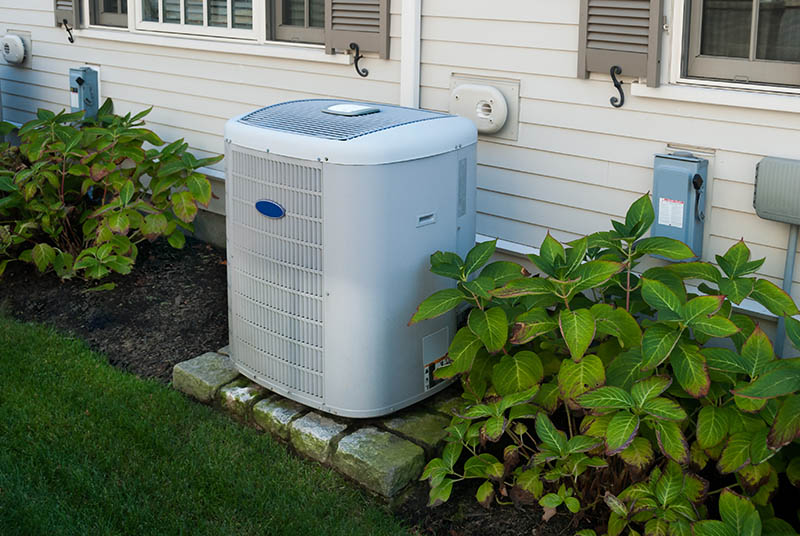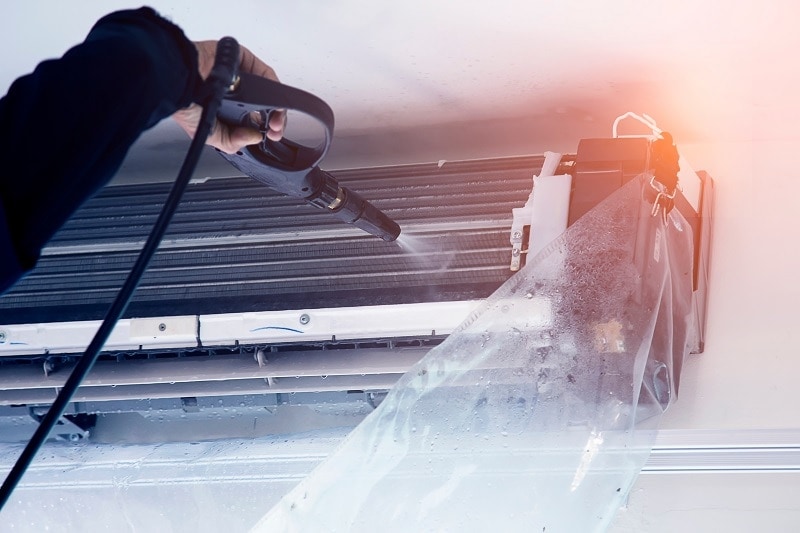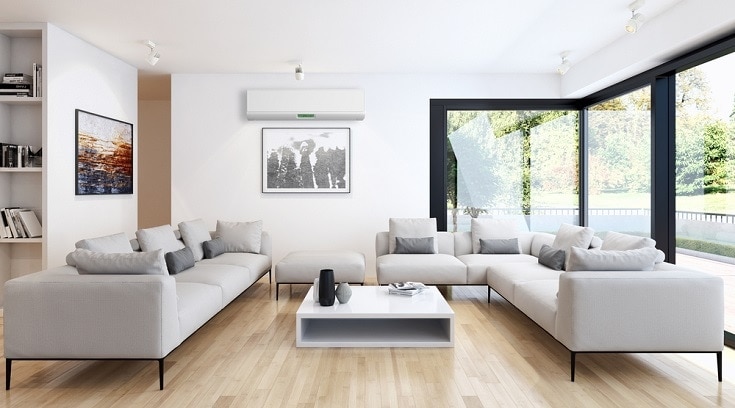How Does a Central Air Conditioner Work? The Interesting Answer!
-
Pete Ortiz
- Last updated:

Air conditioners take air at ambient temperature, pass it over a refrigerant and then expel the cooler air into the atmosphere before drawing in more warm air and repeating the process. A central air conditioner typically runs on electricity and draws air from all rooms of the house, expelling the cold air via ducts and vents spread through the property. Most air conditioning units also use thermostats that measure the temperature of the air and start the system running when the temperature reaches a certain point.
Read on for more details on central air conditioners, how they work, and the different types of central AC that are available.
How Does It Work?
An air conditioner cools the air in your home or other building and is especially common in countries with hot summers. As well as standalone air conditioning units, you can also have a central air conditioner fitted in your home. A central air conditioner works in the following way:
Most systems have a thermostat or series of thermostats. These measure air temperature and when the air reaches a certain temperature, the system is activated.
One or more fans within the property draws in warm air from the house, passing the air through ducts. The ducts typically contain filters that filter out dust and lint, and potential allergens.
Once filtered, the air passes over an evaporator coil. The warming of the coil converts refrigerant liquid in the coil to a gas and the heat from the air is absorbed into the gas. When the heat has been drawn out of the air, and the air is cool, it is then passed back through ducts and out of vents into the rooms of the house.
The refrigerant gas in the evaporator coil passes into a compressor typically located outside the property. The compressor compresses the gas, and a fan pulls in air from outside, effectively converting the gas back into a liquid. The refrigerant liquid is then passed back into the evaporator coil where it can gather more heat from the warm internal air.
The process is repeated until the thermostat registers that the air has reached the desired temperature and switches the system off.

What Are the Different Types of Central Air Conditioners?
Although all air conditioners work using the same basic principles, there are different types of central air systems.
- Split System Air Conditioner – This is the most common type of central air conditioner. It is a split system because part of the system is inside the property and part of the system is outside. The indoor unit collects and circulates air through the house after cooling it down. The outdoor unit deals with the refrigerant after it has been converted to a gas and diverted it back into the internal system.
- Multi-Stage Air Conditioner – A split system air conditioner typically only works when the air reaches a certain point, but it also has one operating speed. The system will run at this speed regardless of how much cooling is actually required. A multi-stage air conditioner can run on low speed, as well as standard or high speed, which means that it is more energy efficient, especially when the air is warm rather than hot. This is essentially a type of split-system air conditioner but is more energy efficient.
- Packaged Air Conditioner – A packaged air conditioner has a single unit, into which all the components are packaged. This type of system is usually installed as a rooftop air conditioning system and takes less room than a split system, but it may not be as efficient at cooling large spaces.
Both packaged and split system air conditioners can take different forms, including those that are more efficient as well as systems that are designed for quieter operation or for more challenging installations.

Where Is It Used?
Central air conditioning systems are typically used in homes and other buildings where there is a lot of space or multiple rooms that need the air conditioning facility. Smaller properties and single rooms can use portable or window air conditioners instead because they work out cheaper in these cases. Some apartment buildings and housing units also have a central air conditioning unit that connects to the air conditioning of the whole building.
Advantages of Central Air Conditioning
- Consistent temperature – A central air conditioning unit that is well set up and has multiple thermostats set up around the house, as well as a good system of ducts and vents, can keep the temperature in a whole house consistent from room to room and throughout the whole year. This is difficult to achieve by just opening windows and doors and even by using portable and window air conditioners.
- Filtered air – As air is drawn into a central air system, it passes through filters that remove dust and other particulates. This can help allergy sufferers and benefits everybody because it produces clean air.
- Can be combined with a heating system – A central air system can be combined with a heating system. It can also be used to control humidity and other atmospheric conditions within the home and it can do so automatically so that when the air temperature gets too high, the air conditioner starts working, and in winter when temperatures get lower, the heating system increases the ambient temperature. No need for additional systems.

Disadvantages of Central Air Conditioning
- Higher energy usage – If you are going from having no air conditioning system to having central air conditioning, you will notice a significant increase in electricity consumption and how much you spend on energy bills. The difference will be especially noticeable in the summer months.
- System maintenance – Ducts and pipework need regular maintenance otherwise they can harbor mold and bacteria, which are then pushed out from the ducts, potentially causing an increase in allergic reactions and even some breathing problems. Annual maintenance should be considered an important element in having this kind of system.
- Ductwork space – A portable air conditioner takes up room in an individual room or at a window, and while a central air system doesn’t take up room in this way, it does need ductwork running throughout the house. If you don’t have space for this, you will need a ductless system which can be more expensive and less efficient.
Frequently Asked Questions (FAQs)
Is central air the same as HVAC?
HVAC stands for Heating, Ventilation, and Air Conditioning, which means that as well as offering central air conditioning it also ventilates the property and is responsible for heating the home when it is cold.

Is central air cheaper than heat?
This really depends on how hot or cold your climate is, but it is generally considered more expensive to heat a house over the course of a year than it is to use the air conditioning over the same year.
Is central air conditioning better than portable and window units?
Central air conditioners are generally more efficient than individual air conditioners and window units. They are also quieter and don’t take up as much room space. However, if you only have a small space where you want to manage the air or you don’t have adequate space for ductwork, central air may not be an option for you and your property.
Conclusion
A central air conditioner monitors the temperature in a house and, when it reaches a predetermined temperature, takes warm air from the house, cools it down, and passes it back into the rooms of the property, therefore reducing the internal temperature.
Most systems are split-system air conditioners, which means that there is a unit inside the house and a unit outside the house, this type of system is more efficient and effective and quieter than most portable or window air conditioners, but they do require more room for ductwork and regular maintenance.
Featured Image Credit: Christian Delbert, Shutterstock
Contents


